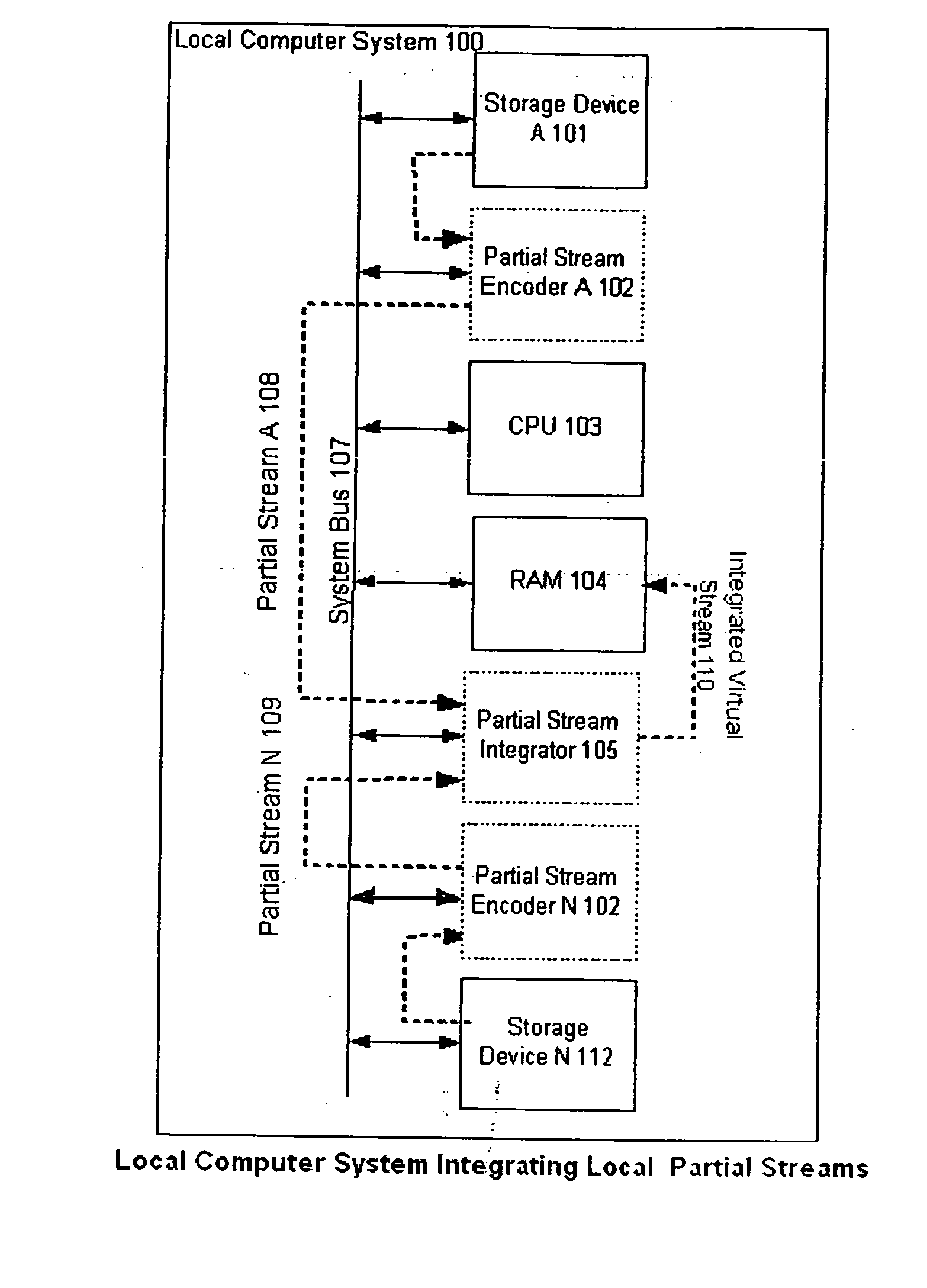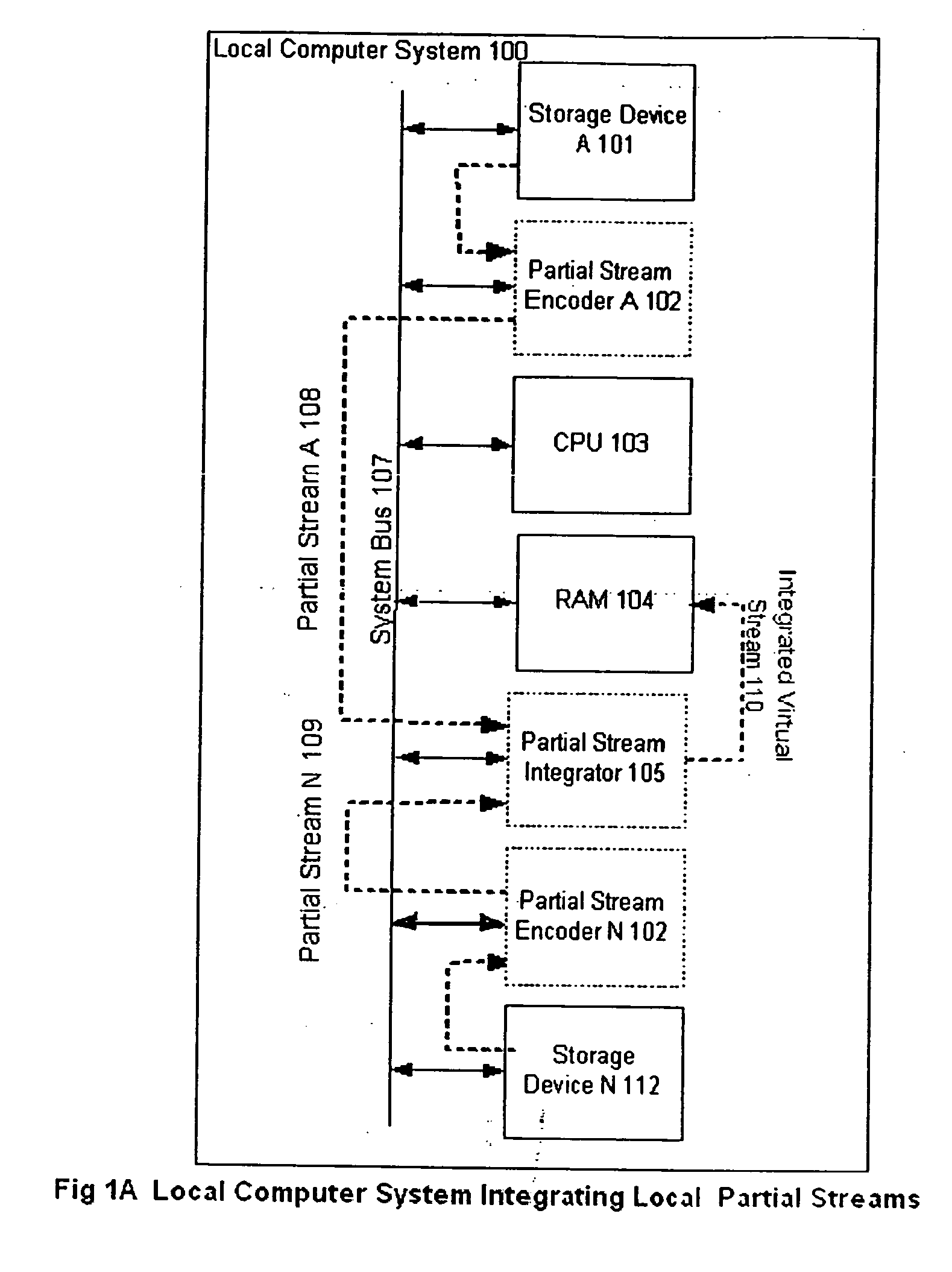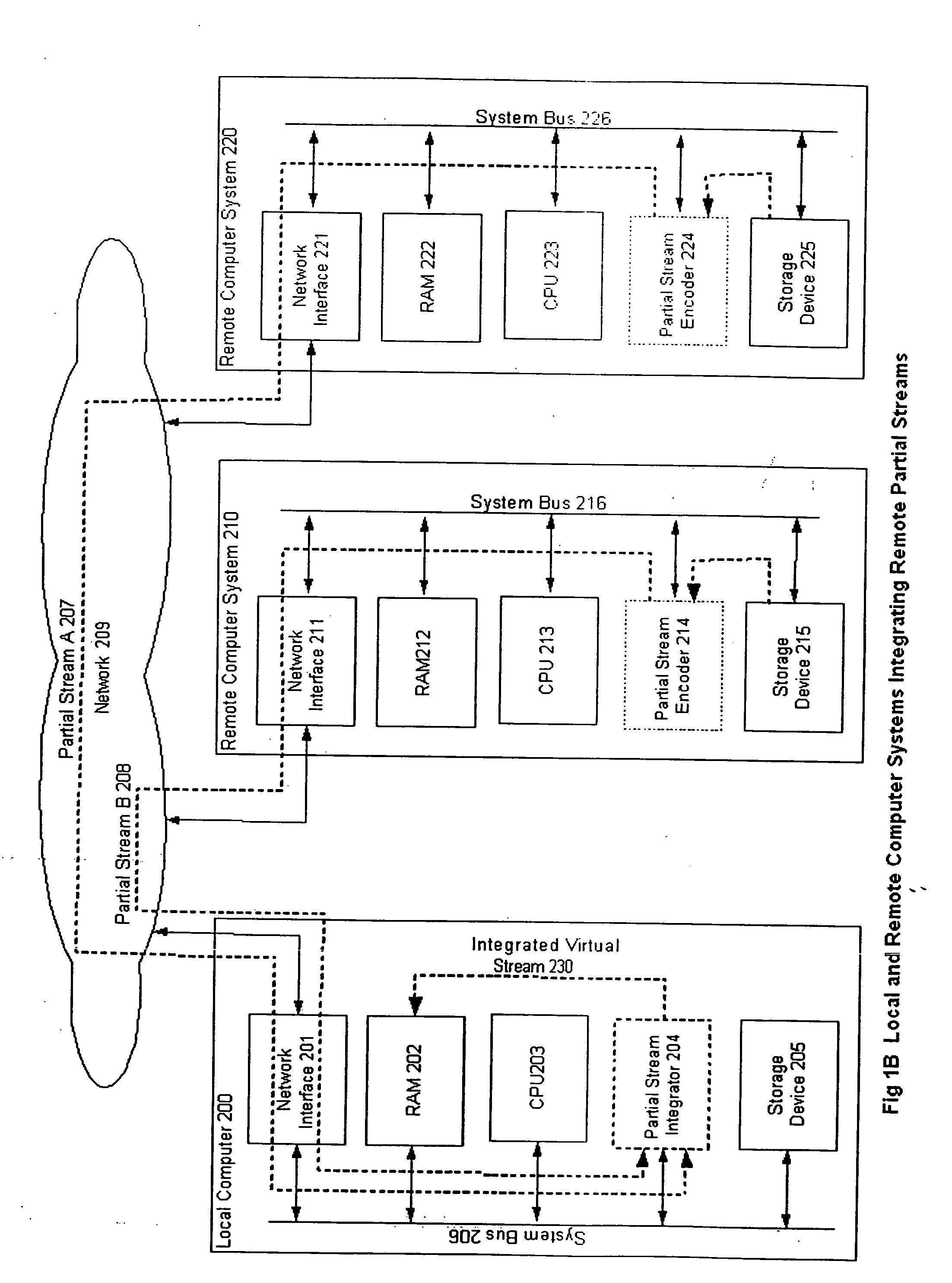System and method for transmitting data in computer systems using virtual streaming
a computer system and data technology, applied in the field of data transmission, can solve the problems of not being used across different, synchronizing multiple storage devices, and not being able to achieve the performance and efficiency of systems comprised of multiple heterogeneous storage devices
- Summary
- Abstract
- Description
- Claims
- Application Information
AI Technical Summary
Benefits of technology
Problems solved by technology
Method used
Image
Examples
Embodiment Construction
[0027] A system and method of transmitting data in computer systems whereby the data are divided into two or more partial streams, processed for transmission through specific channels, transmitted and recombined at the destination so as to optimize the transmission speed, or data security, or functional utility of the data is described.
[0028]FIG. 1A shows a block diagram illustrating an example of a local computer system 100 in accordance with the present invention. The local computer system 100 includes a System Bus 101 that couples together a CPU 103, RAM memory 104, a Storage Device A 101, and another Storage Device N 106 and further shows a Partial Stream Encoder A 102, a Partial Stream Encoder N 112 and a Partial Stream Integrator 105 according to this invention, whereby a collection of associated data is stored on the Storage Device A 101 and Storage Device N 106 either separated into component parts and distributed between said storage devices, or as duplicates stored on eac...
PUM
 Login to View More
Login to View More Abstract
Description
Claims
Application Information
 Login to View More
Login to View More - R&D
- Intellectual Property
- Life Sciences
- Materials
- Tech Scout
- Unparalleled Data Quality
- Higher Quality Content
- 60% Fewer Hallucinations
Browse by: Latest US Patents, China's latest patents, Technical Efficacy Thesaurus, Application Domain, Technology Topic, Popular Technical Reports.
© 2025 PatSnap. All rights reserved.Legal|Privacy policy|Modern Slavery Act Transparency Statement|Sitemap|About US| Contact US: help@patsnap.com



